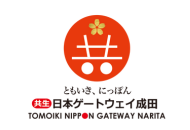He was won over by the depth of flavour and the exotic aromas.
The wine is a blend of 85% Muscaris and 15% Souvignier Gris, two of the most exciting new-age fungal-resistant grape varieties. Muscaris is a crossing of Solaris and Muskateller while Souvignier Gris is a pink-skinned crossing of Seyval Blanc and Zähringer. The wine was made in association with BioWeingut Karl Renner in Steiermark, Austria.
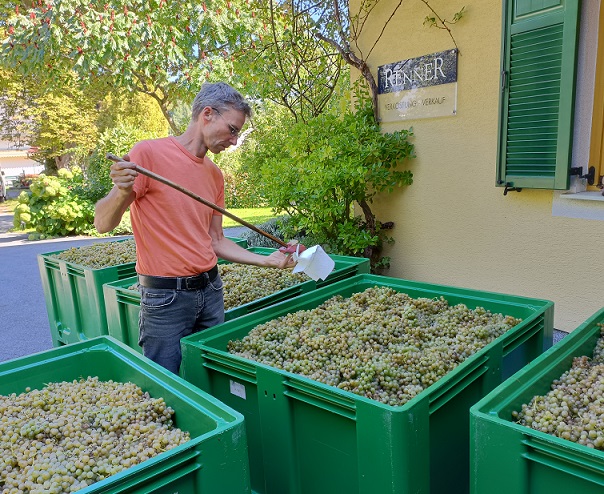
Most people who have tried the wine have enjoyed the “full-on” Muscat flavours, aromas that “leap out of the glass” and “lovely balance” (The Buyer).
Most of the focus so far, strangely, has been about the style – traditional white and red wine drinkers saying this is a bottle of orange wine that they would happily finish.
But, for me, the story is not about the aromas, flavours or style – it’s about the wine’s sustainability credentials.
In the challenging vintage of 2022, the vines were sprayed twice, using only about 10% of the copper that was sprayed on the organic Chardonnay in a nearby parcel. With grapevines the most pesticide-intensive crop in European agriculture, varieties that require significantly fewer sprays – and therefore leave fewer toxins in the soil – are worth championing.
Especially as the need for pest management is likely to increase due to climate change. Changes to rainfall patterns, coupled with higher temperatures, are leading to higher levels of humidity which, in turn, allow mildew, fungi and other diseases to overwhelm the vines. But, at the same time, consumers and authorities are demanding fewer traces of pesticides in their wines. The European Unions’ Farm-to-Fork strategy mandates a reduction in the overall use and risk of chemical and hazardous pesticides by 50% by 2030.
One of the easiest ways to achieve this is a major switch to disease-resistant varieties which allow fungicide use to be reduced by around 80% while at the same time increasing yield (because there are more healthy grapes to harvest). The main reasons for hesitancy on the part of consumers and wine producers concern perception and doubts over quality. This is why I went to Pößnitz in 2022 to see for myself if it was possible to produce a fine wine from so-called piwi grape varieties.
Here are some conclusions from the project, now that the wine has been bottled and is ready for release.
It’s time to find a new name for this type of grape
I have called the wine DR #1 – as it’s my first wine made from disease-resistant (DR) grapes. From now on, I’m trying to avoid using the term piwi (or PIWI or PiWi).From the few tastings conducted so far, I realise ‘piwi’ requires another layer of explanation and I struggle to say Pilzwiderstandsfähige confidently.
Some wine educators pick up on the German origin of the term and say pee-vee; others like to get a giggle from saying pee-wee. But as Tim Wildman MW, who runs Lost In A Field, a project which takes German hybrids planted in the UK in the last century and turns them into pet-nats using natural winemaking methods, said in this article: “When I mention piwis, people say that’s going to be an interesting marketing effort, isn’t it? Because it’s called pee and wee. And in English, it’s obviously not the best thing when you’re talking about flavourful wines. So, when you’re talking about marketing and piwis you’ve got to change the name and change the perception.”
So, in the company of non-German speakers, it no longer makes sense for me – and producers outside Austria and Germany – to carry on using the term.
I notice that in New Zealand, where Sauvignon Nepis is being introduced as a possible sustainable blending partner for Sauvignon Blanc, they are using the acronym DRV (disease resistant variety). A recent research paper from Switzerland (referred to below) calls them FRGs (fungus-resistant grapevines).
But I will refer to them as DR (disease-resistant) grapes and see if it catches on.
In the vineyard
In the evolving landscape of viticulture, the emergence of DR grapes marks a significant stride toward sustainable wine production. These innovative cultivars, developed through the hybridization of European Vitis vinifera with other Vitis species, exhibit a natural resilience to common fungal diseases such as downy and powdery mildew. This inherent resistance substantially reduces the necessity for chemical interventions, thereby promoting environmental sustainability and economic efficiency in vineyards.Studies indicate that these varieties can diminish the need for synthetic pesticides by over 80%, significantly lowering the environmental footprint of viticulture. This reduction not only conserves biodiversity but also mitigates soil and water contamination associated with conventional fungicide use. Moreover, the decreased frequency of vineyard treatments translates to lower fuel consumption and reduced CO₂ emissions, contributing to a more sustainable agricultural practice.
One of the things I remember most about the 2022 vintage was that BioWeingut Karl Renner’s organic Chardonnay vineyard had 11 sprays and produced no grapes, such was the disease pressure that vintage. Yet the Muscaris (below) and Souvignier Gris were very clean and could be used for a skin-contact wine.
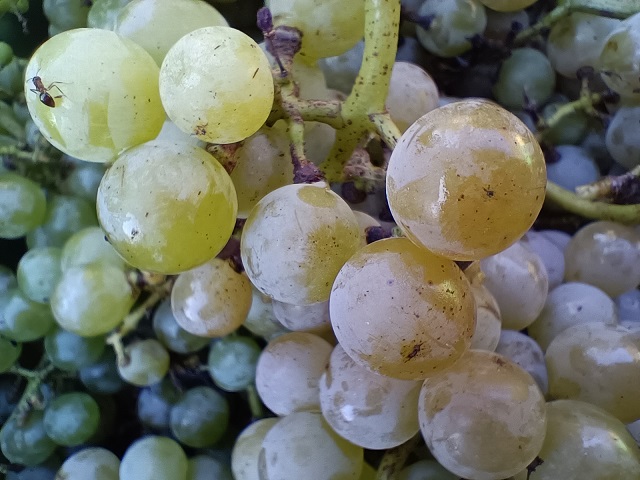
The conventional vines at the Renner vineyards were sprayed with 2,655g of pure copper per hectare of vines – relatively low for a region with average annual rainfall of 900-1,000mm. The DR grapes had 1-2 sprays – only 276g of pure copper per hectare applied in total. “It was similar or even less for sulphur,” Charly Renner recalls. “This means that we have saved 90% of the spraying agents in the PIWIs. That is extreme. During the growth phase, when it is very wet and the fungal pressure is very high, I save perhaps 70-80% – which is still very good value.”
A recent study in Switzerland found that with the share of land devoted to fungus-resistant varieties expected to grow by 27.4% in 10 years’ time, the number of pesticide treatments in vineyards could be reduced “massively, at least by around 32,000 treatments per year”. The study, available here, says: “This implies major economic savings at the farm level as well as reduced impacts on the environment. Moreover, it aligns with recent societal demand to reduce pesticide use whose interest by the public has increased significantly in recent years.”
In the winery

Because these varieties are relatively new, producers are still experimenting to find the best vinification protocols. We fermented and aged the Muscaris in a tank and a 350L amphora. We fermented and aged the Souvignier Gris in steel, oak and amphora. The Muscaris from amphora was just so good we used that as the base for the blend, and added 15% Souvignier Gris from the second amphora (above), both of which were bought specially for this project.
Because the skins were so healthy, there were no problems with the spontaneous fermentations or lengthy macerations. The Muscaris was left on skins for 20 days. The Souvignier Gris underwent an unusual vinification: about 70% of the skins were removed during the fermentation, as they floated to the top, but the berries that sank were left there among the gross lees for more than two years. This helped to protect the wine with only minimal sulphur added prior to bottling. The wine wasn’t fined or filtered because we didn’t want to lose any of the flavours, aromas or character of this special sustainable wine.
In the market

The reviews have been wonderful. Influencer Georgie Kinsella (@brightonwines) described it as “the best orange wine I have ever tried”. For me, it’s the second best – after biodynamic winemaker Božidar Zorjan’s Dolium Muskat Ottonel. But it reminds me of this wine – acknowledged to be one the best orange wines in the world by Amber Revolution author Simon Woolf.
Despite the encouraging reviews, I still haven’t sold a bottle.
One issue is that most buyers don’t know these grape varieties and recall the lacklustre first-generation hybrids.
“We don’t speak about hybrids anymore, they are the old generation of breedings,” says Charly’s brother, Wolfgang Renner, chairman of PIWI Austria.
They received a bad rap for their neutral flavours. However, due to advancements in breeding methods, the new generation of fungus-resistant varieties carry a higher degree of Vitis vinifera genes as well as resistance genes, resulting in finer wines.
But they are still niche wines. It is estimated that the total land share devoted to fungus-resistant varieties ranges between 1% and 3% in countries like Switzerland, Austria, Germany, and France. It might be growing but it’s from a low base.
An amber piwi wine is ultra-niche. When I went to Steiermark in September 2022 to harvest the Muscaris and returned two weeks later to pick the Souvignier Gris, the aim was to use this wine to raise the profile of fungal-resistant grapes by showing that it was possible to combine great flavours and great resistance in the same glass. The next step is to get some of the 400 bottles currently in the cellar at BioWeingut Karl Renner into top restaurants and show that DR grapes can also make fine wines that wine lovers seek out for their high quality and sustainability.

 English
English French
French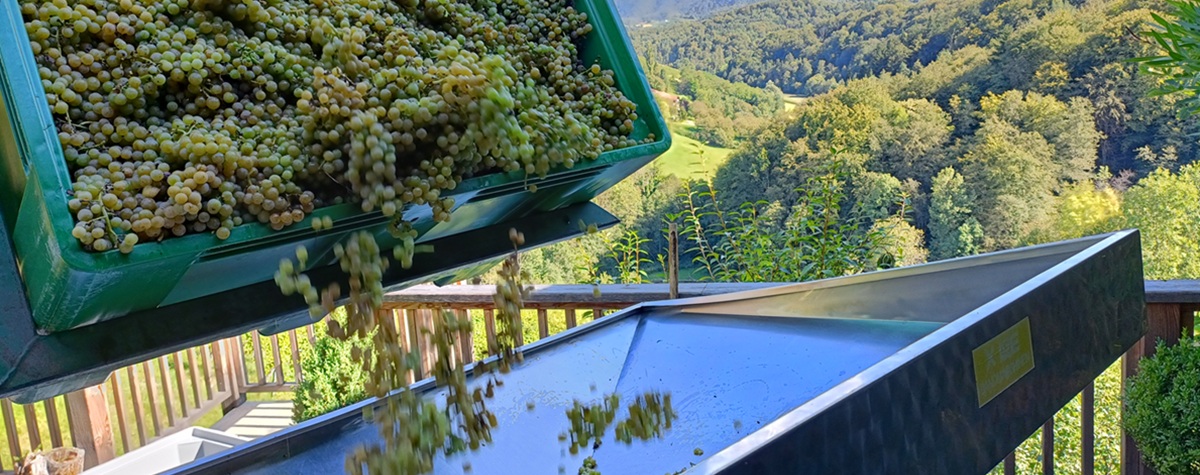

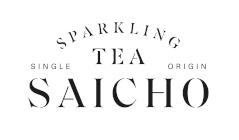





.png)
